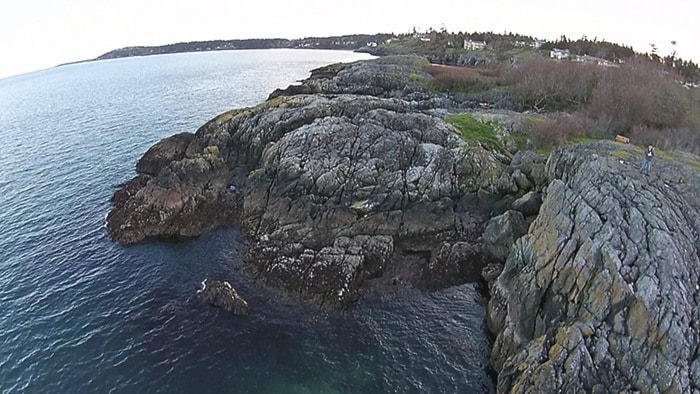After watching a few online videos that were shot using a drone, Carlos Miranda’s eyes were opened to a whole new world of landscape photography.
An avid photographer, the Victoria resident liked the idea of capturing images of the coastline from the sky. It gave a completely different perspective of the Island’s natural beauty.
So about a year ago, Miranda purchased a Phantom 3 drone, which he takes into the middle of nowhere and let’s his creative juices soar.
“I am always conscious of where I go. I usually try to go places that have no people, not only for the privacy but also for safety reasons,” said Miranda, who usually flies his drone 120 metres above the ground, even though it can go up to 800 metres.
“If the drone falls into the ocean, it wouldn’t be my favourite thing to happen, however I will never want it to fall on someone. I fly away from the shore, turn around, take a picture and bring it back.”
As the popularity of drones continues to rise, so does the amount of them being spotted by pilots in Victoria’s bustling Inner Harbour.
According to Brendan McCormick, chief pilot for Helijet International Inc., pilots have seen an increase in drones during the last five to six years, averaging one every five weeks. The drones are mainly seen as helicopters approach and depart from the helipad in James Bay, and also along Oak Bay’s shoreline. Some have come within a quarter of a mile to half a mile of the helicopter, causing the pilots concern.
“Drones are not very visible and they travel a long distance. They have an element of unpredictability for the user and for everyone else that’s sharing the sky with them. It’s a bit concerning,” said McCormick, who believes there needs to be more awareness when it comes to drones.
“If people are more aware of what they’re doing and what the consequences could be, then they may think twice about where they choose to operate drones.”
As a result of the increase in drones, more limits are now being placed on where they can fly. Last week, Transport Canada put up new “No Drone Zone” signs around Victoria’s Inner Harbour, warning users they need permission to fly within a 9 kilometre radius of the harbour airport.
The new signs are part of a national safety campaign that reminds users to only operate their drone in approved areas. The federal agency is also looking at a number of changes for drone users, including establishing categories of drones, simplifying the registration process for operators and instituting marking requirements.
Under the current guidelines, anyone using a drone for commercial or research purposes must hold a special flight operations certificate from Transport Canada or be eligible to operate under one of the UAV exemptions. Those who choose to ignore the rules could face fines of up to $25,000.
In 2015, Transport Canada investigated almost 100 incidents of unsafe drone practices and first raised concerns about drone activity near Victoria’s seaplane terminal in February.
For Miranda, getting pictures of the Inner hHarbour from a drone would be absolutely amazing, but he knows it’s not worth the risk.
“They have sharp blades. They could badly hurt someone and there are airplanes there,” said Miranda, noting some drone technology advises users where there is a no fly zone so it won’t fly into the area.
“People think it’s a toy, but it’s not. It’s a tool that you are using to take pictures and with that you have a degree of responsibility.”
